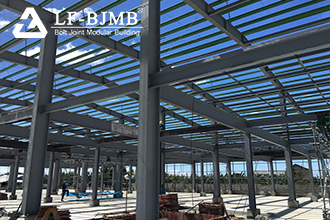To build a factory in an earthquake-prone area, you need to pay attention to the following points:

Site selection: Try to select lots such as open and flat hard site soils or dense and uniform dry and hard site soils, and avoid lots that are unfavorable to the building’s seismic resistance, such as soft site soils, liquefiable soils, striped protruding spurs, high and isolated hills, non-rocky steep slopes, mining areas, river banks and edges of slopes, and other lots.
Structural Safety Assessment: During the design and construction phase, a structural safety assessment must be conducted to ensure that the building can withstand the effects of an earthquake. This includes the use of seismic design principles and building materials that comply with earthquake codes. High-strength structural steel and reinforced concrete can increase a building’s seismic capacity and reduce the risk of damage and collapse.
Foundation Stability: Strong foundations are key to ensuring the stability of the plant. For earthquake-prone areas, foundation treatments such as pre-compacted foundations or increased foundation stability should be performed. Fine sand foundations are prone to liquefaction, which increases the risk of building collapse during earthquakes.
Equipment and materials: Equipment and materials in the plant should be properly secured to prevent them from slipping or tipping during an earthquake. Equipment such as cranes and pressure vessels should be seismically reinforced as required.
Emergency plans: Emergency plans for responding to earthquakes, including evacuation procedures, rescue measures, etc., should be formulated to minimize casualties and property damage.
Regular Maintenance and Inspection: Conduct regular maintenance and inspection of the plant to ensure that the structure, equipment and facilities are in good condition. Timely detection and repair of potential safety hazards.
The above are just some basic recommendations. Specific measures should be determined based on the specific conditions of the plant, local seismic activity, and relevant regulations and standards.











 About Us
About Us 2024-01-08
2024-01-08


